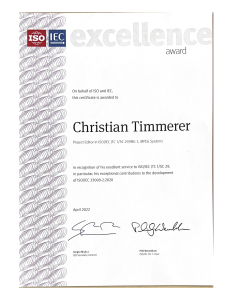Elsevier Signal Processing
[PDF]
Lingfeng Qu (Guangzhou University, China), Hui Lu (Guangzhou University, China), Peng Chen (Guangzhou University, China), Hadi Amirpour (Alpen-Adria-Universität Klagenfurt, Austria), and Christian Timmerer (Alpen-Adria-Universität Klagenfurt, Austria)

Abstract:
Reversible data hiding in encrypted domain (RDH-ED) is widely used for ensuring the security of content, protecting privacy, and facilitating the management of digital media stored in the cloud. However, research on the application of RDH-ED technology in 3D mesh model carriers is still in its infancy. This paper proposes a reversible data hiding scheme based on Ring Co-XOR encryption (RCXOR) to address the challenges with the existing RDH-ED algorithms for 3D mesh models. Specifically, the proposed scheme eliminates the need to transmit auxiliary information to a third party and increases the embedding capacity. First, the original 3D mesh model is divided into m non-overlapping rings, where different rings do not share vertices. Next, m sets of random bitstreams are generated based on the encryption key. Within each ring, the vertices are encrypted using bitwise XOR with the same random bitstream. This preserves redundancy between adjacent vertices within the same ring in the encrypted data. Finally, a multi-MSB prediction method based on the ring vertex is proposed using the RCXOR encryption technique. To this end, the ring center vertex (RCV) serves as the reference vertex for predicting the multi-MSB of the ring edge vertex (REV), creating space for data hiding. The Canonical Huffman Coding method is used to compress the label and obtain the optimal embedding capacity for data hiding. The experimental results demonstrate that the proposed algorithm surpasses the current vacating room after encryption (VRAE)-based methods in terms of embedding ability, achieving an average embedding rate of 25.63 bits per voxel (bpv) on the dataset, compared to 6 bpv for the state-of-the-art approach.

 On behalf of ISO and IEC, this certificate is awarded to
On behalf of ISO and IEC, this certificate is awarded to







